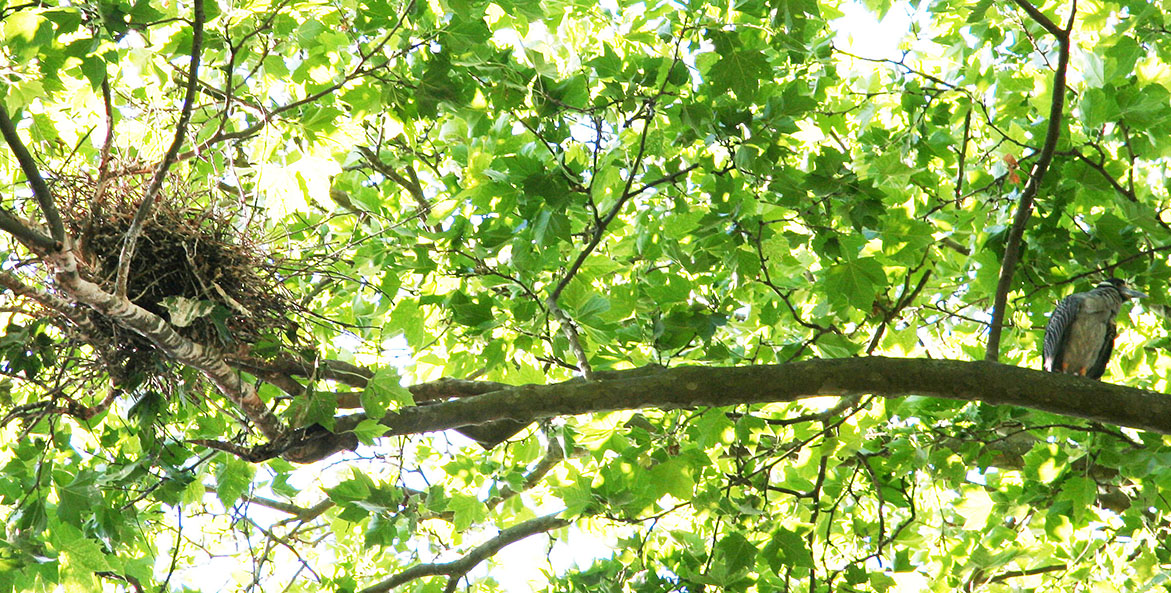Migratory, Yellow-crowned Night-Herons have returned to their northernmost breeding grounds to rear their young high above the streets of Harrisburg, again leaving their marks on Pennsylvania's capital city.
Bird watchers and those curious to see wading birds living in a city stroll between Second Street and the Susquehanna River, early April through October.
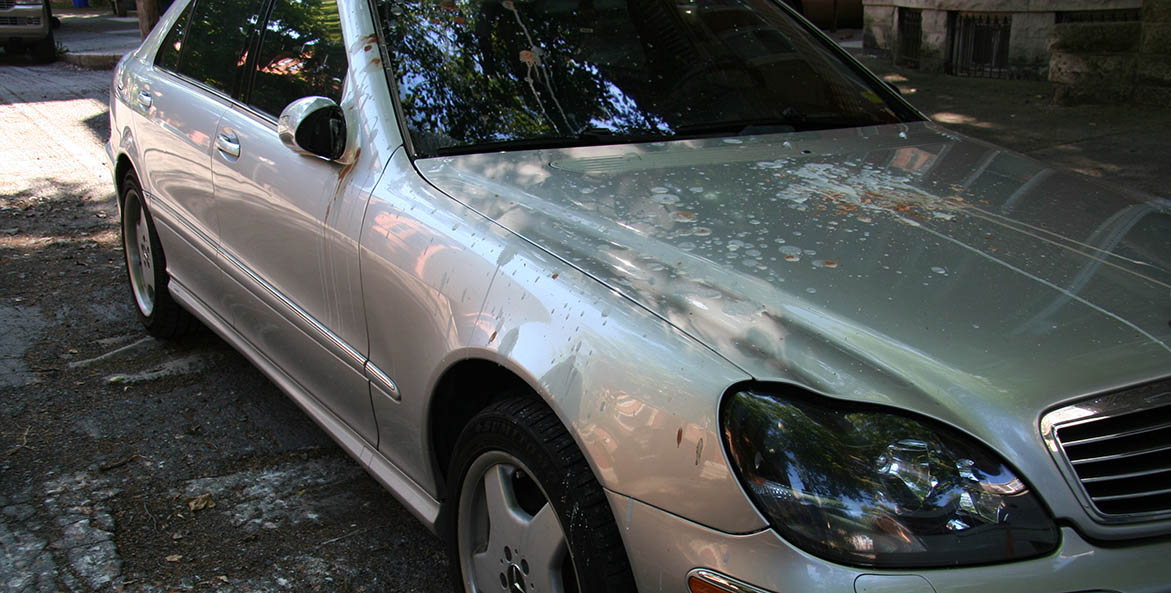
Sidewalks and parked vehicles splattered heavily with droppings make Yellow-crowned Night-Heron nests easy to find in midtown Harrisburg, PA.
BJ Small/CBF Staff
Nests are easy to find. Their presence is marked by large sycamores, and sidewalks and parked vehicles splattered heavily with droppings. Admiring a heron nest is best done from most angles not directly beneath it.
Adults will return to the same nest tree for decades. Some trees have hosted six or more nests. One nest on Hamilton Street this month had four young in it. Nesting starts in early April and most young fledge by mid-summer.
Jennifer Lee Hirt moved to midtown in 2007 and lives a block from one of the sycamores with multiple nests. "I had no idea what these birds were," she says. "For a few weeks I just called them the 'bicycle helmet birds,' after the markings on their heads. I was intrigued by how they hunted on the steps of the lower part of the river walk."
Crayfish are a major part of this heron's diet in Pennsylvania, and they find many of the crayfish in the Susquehanna. Their appetite for the crustaceans is particularly helpful with reducing the number of invasive rusty crayfish, which are larger than most other species.
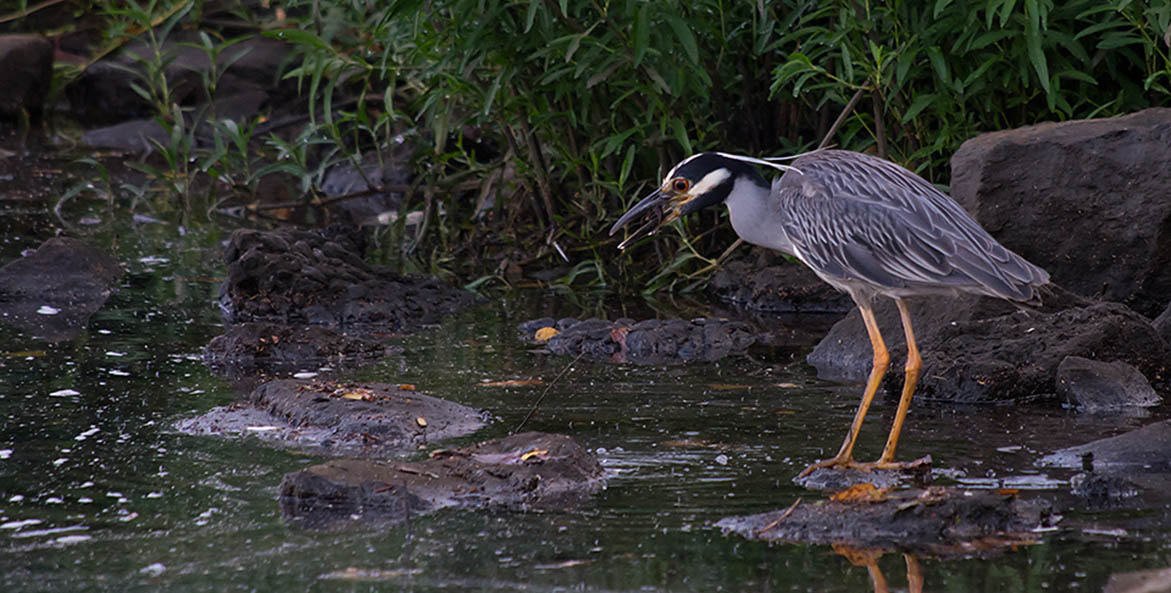
Yellow-crowned Night-Heron fishing along the Susquehanna River in Harrisburg, PA.
Kelly O'Neill
Kelly O'Neill, agricultural policy analyst for CBF in Pennsylvania, used to live not far from where the herons nest. She enjoyed regular check-ins and photographing them. "I combined dog walking with keeping tabs on the nest construction, egg incubation, and growth of the juveniles," O'Neill says. "Watching them hunt along the river was a lot of fun, especially when I saw one catch a crayfish, toss it in the air to get it in a better position, and then gulp it down."
O'Neill was happy to share with others what she learned about the herons. "People were usually amazed to learn that midtown Harrisburg was the only place the herons were known to breed in Pennsylvania," O'Neill says. "I was glad that the Yellow-crowned Night-Herons considered midtown a hip place to live."
Surveys in the 1990s counted no more than eight to 12 nests in any year in the state. They were once found in Lancaster, Cumberland, Dauphin, and York Counties. Now in just the city of Harrisburg, there may be more than 12 nests about a mile from the capital building.
"How odd that herons would lay claim to an urban rookery, especially when the long and low islands of the Susquehanna River are two blocks away, each thick and wild with maples, ashes, and oaks, no matrixes of high voltage to undo plumage," Hirt, an associate professor at Penn State Harrisburg, posted in a 2018 essay.
Patricia Barber, a state endangered bird biologist, said the urban neighborhood helps protect the heron nests because the activity discourages small mammals, like raccoons, that might otherwise attack nests. That nests are built and sway near the tips of long branches also may make it difficult for predators to approach.
Degradation of water quality, especially in the Susquehanna and the loss of crayfish, their primary food source, are an ever-present threat to the birds.
The Pennsylvania Game Commission, which monitors colonies through its Colonial Waterbird Program, says that watershed protection efforts to reduce polluted runoff will greatly benefit this and other waterbird species.
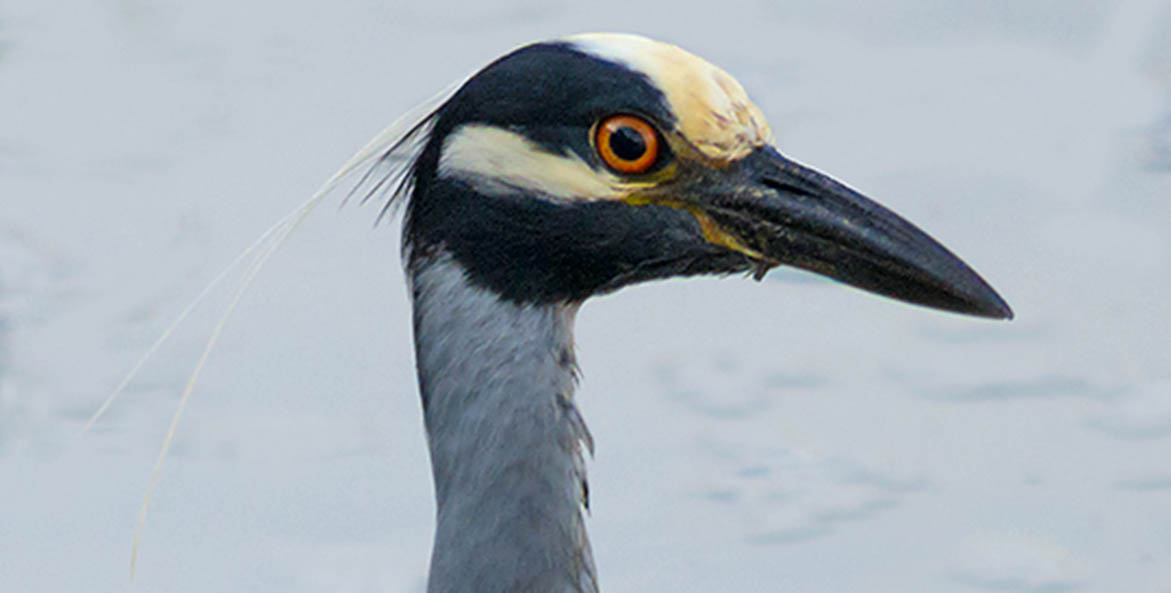
Yellow-crowned Night-Heron.
Kelly O'Neill
Adults are 22 to 28 inches long from bill to tail tips, gray with a black head and whitish cheek patch, and yellowish crown. Their eyes are red and legs yellowish, except during courtship when the legs turn coral pink to scarlet. Immature birds are less dramatic in brown, finely spotted and streaked with white.
The Yellow-crowned Night-Heron is listed as state endangered or protected because of their small and vulnerable population and as one of the state's rarest nesting birds. Nationally they are not listed as endangered or threatened. Their range is mainly in the southcentral United States and parts of Central and South America.
"They are a touchstone for me, a way to track time, I guess," Hirt says. Since 2015, she has kept notes on when she first sees the herons in the spring.
"This year, there are fewer heron nests, at least in the trees I've watched over the last six years," Hirt adds. "They aren't hunting as much (for insects) in the vacant lots between 3rd and 7th Streets. I chalk this up to increased development in those areas. On the upside, I am seeing more at the river, it seems."
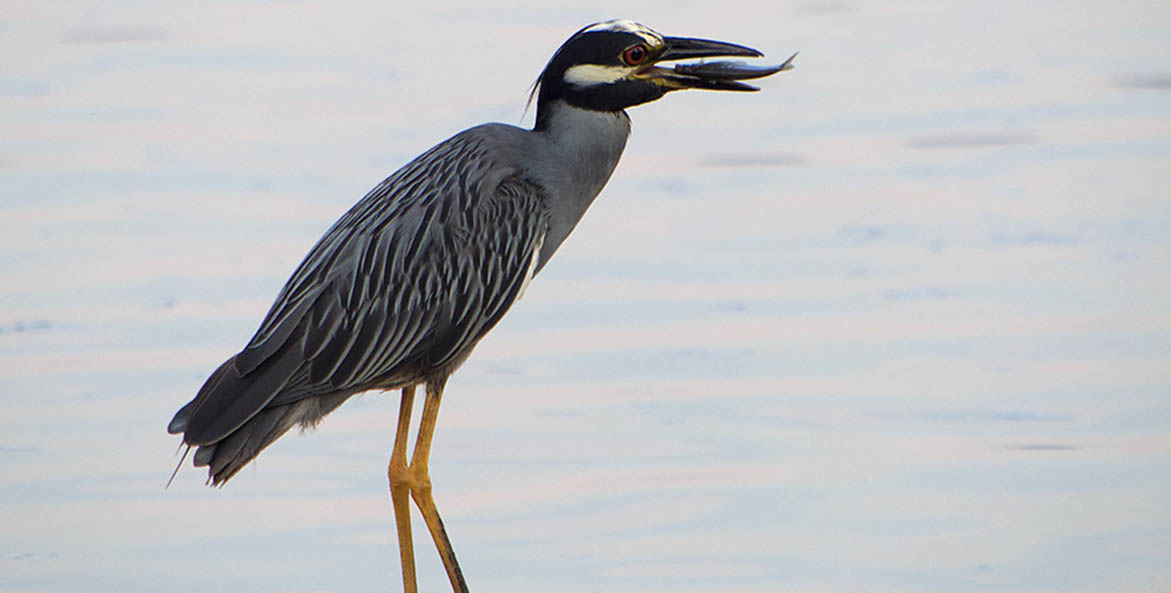
Yellow-crowned Night-Heron eating a fish from the Susquehanna River in Harrisburg, PA.
Kelly O'Neill

